How to completely delete sql2008
How to completely delete sql2008: First, select the uninstall program in Programs and Features, click [Next]; then select [Delete] when the selection function appears; then follow the prompts to complete the deletion; finally close the window, And go back to the uninstall or update program to delete the remaining sql files.

How to completely delete SQL2008: Select Uninstall the program in Programs and Features, click Next, when the selection function appears, select Delete all and follow the prompts step by step Go until it prompts that the deletion is complete, then close the window and return to the uninstall or update program to delete the remaining sql files. After everything is completed, restart the computer.
After SQLServer2008 is uninstalled, it often cannot be reinstalled, or something like this occurs during the installation process. The reason for such a problem is that SQL Server 2008 has not been uninstalled cleanly. Here I will introduce to you how to completely and cleanly delete SQL Server 2008 from your computer.
1. Of course, the entry for deletion is still "Uninstall or Change Programs" in "Programs and Features" of the Windows system. You must know where it is. Then find Microsoft SQL Server 2008 (64-bit), right-click "Uninstall or Update." (Note: Although there are many programs starting with Microsoft SQL Server 2008, just select this main program. Other components are in the removal process. will be automatically deleted).
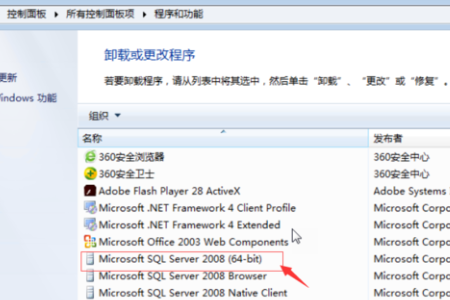
#2. The "Delete Instance" window will appear later, select Next.
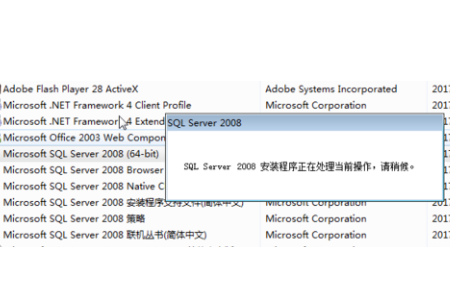
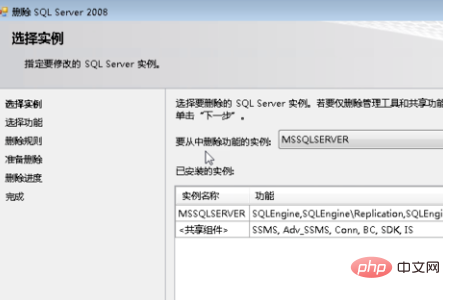
3. The "Select Function" dialog box appears. At this time, be sure to click the "Select All" button one by one. There may be errors, and an error will be prompted when reinstalling. Then select the "Next" button.
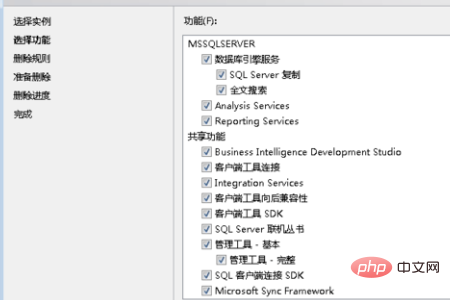
#4. The uninstaller will check the rules to see if it meets the conditions for uninstallation. If it can be uninstalled, click "Next" and a function to be deleted will appear. If the component tree does not meet the requirements, such as "needs to restart" or something, just restart the computer and go back to the first step above to start the operation. At this point, click the "Delete" button.
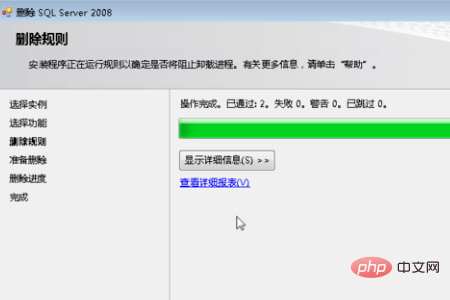
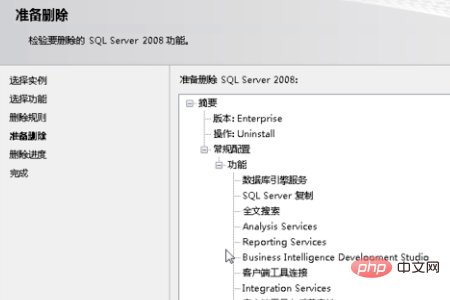
5. The long deletion process begins. After the deletion is completed, all the statuses in the deletion progress are "successful"
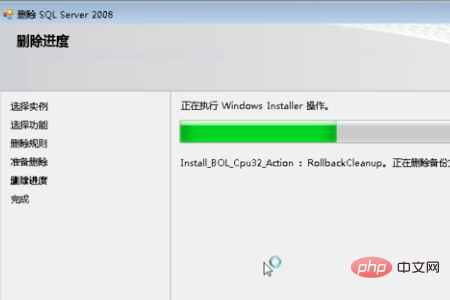
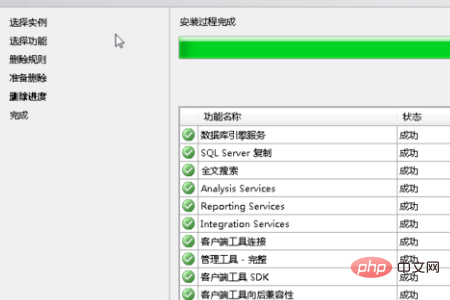
6. Click "Next" again. It will prompt that the deletion is complete. Click the Close button.
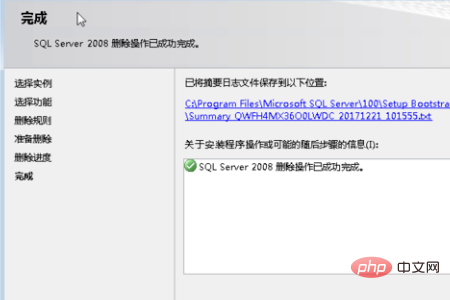
7. It’s not over yet. Let’s go back to “Uninstall or change programs” and delete the programs starting with Microsoft SQLServer 2008. Generally, there are only two, or Right-click and select Delete, and it will be deleted quickly.
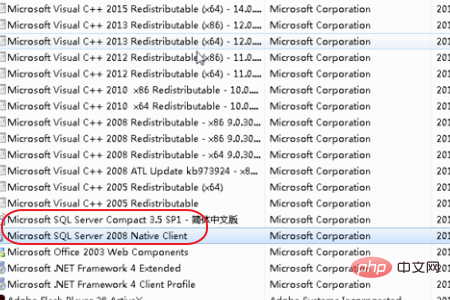
8. It’s not over yet. We need to delete the installation directory selected when installing the instance when installing SQLServer2008, otherwise the existing problem will be prompted when installing again.
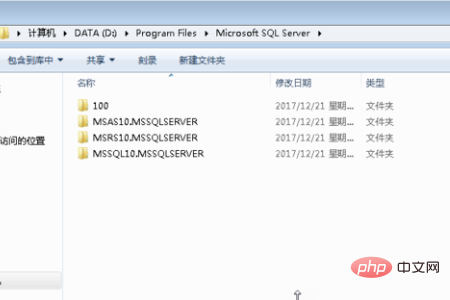
#9. After my test, it is not necessary to delete the registry. Microsoft will not be so low. Another thing you must pay attention to is "restart the computer". Be sure to "restart the computer".
10. Well, if you have done all the above, SQlServer2008 will disappear without a trace. The next installation will not be affected.
The above is the detailed content of How to completely delete sql2008. For more information, please follow other related articles on the PHP Chinese website!

Hot AI Tools

Undresser.AI Undress
AI-powered app for creating realistic nude photos

AI Clothes Remover
Online AI tool for removing clothes from photos.

Undress AI Tool
Undress images for free

Clothoff.io
AI clothes remover

Video Face Swap
Swap faces in any video effortlessly with our completely free AI face swap tool!

Hot Article

Hot Tools

Notepad++7.3.1
Easy-to-use and free code editor

SublimeText3 Chinese version
Chinese version, very easy to use

Zend Studio 13.0.1
Powerful PHP integrated development environment

Dreamweaver CS6
Visual web development tools

SublimeText3 Mac version
God-level code editing software (SublimeText3)

Hot Topics
 1664
1664
 14
14
 1423
1423
 52
52
 1318
1318
 25
25
 1269
1269
 29
29
 1248
1248
 24
24
 MySQL's Role: Databases in Web Applications
Apr 17, 2025 am 12:23 AM
MySQL's Role: Databases in Web Applications
Apr 17, 2025 am 12:23 AM
The main role of MySQL in web applications is to store and manage data. 1.MySQL efficiently processes user information, product catalogs, transaction records and other data. 2. Through SQL query, developers can extract information from the database to generate dynamic content. 3.MySQL works based on the client-server model to ensure acceptable query speed.
 Explain the role of InnoDB redo logs and undo logs.
Apr 15, 2025 am 12:16 AM
Explain the role of InnoDB redo logs and undo logs.
Apr 15, 2025 am 12:16 AM
InnoDB uses redologs and undologs to ensure data consistency and reliability. 1.redologs record data page modification to ensure crash recovery and transaction persistence. 2.undologs records the original data value and supports transaction rollback and MVCC.
 MySQL: An Introduction to the World's Most Popular Database
Apr 12, 2025 am 12:18 AM
MySQL: An Introduction to the World's Most Popular Database
Apr 12, 2025 am 12:18 AM
MySQL is an open source relational database management system, mainly used to store and retrieve data quickly and reliably. Its working principle includes client requests, query resolution, execution of queries and return results. Examples of usage include creating tables, inserting and querying data, and advanced features such as JOIN operations. Common errors involve SQL syntax, data types, and permissions, and optimization suggestions include the use of indexes, optimized queries, and partitioning of tables.
 MySQL's Place: Databases and Programming
Apr 13, 2025 am 12:18 AM
MySQL's Place: Databases and Programming
Apr 13, 2025 am 12:18 AM
MySQL's position in databases and programming is very important. It is an open source relational database management system that is widely used in various application scenarios. 1) MySQL provides efficient data storage, organization and retrieval functions, supporting Web, mobile and enterprise-level systems. 2) It uses a client-server architecture, supports multiple storage engines and index optimization. 3) Basic usages include creating tables and inserting data, and advanced usages involve multi-table JOINs and complex queries. 4) Frequently asked questions such as SQL syntax errors and performance issues can be debugged through the EXPLAIN command and slow query log. 5) Performance optimization methods include rational use of indexes, optimized query and use of caches. Best practices include using transactions and PreparedStatemen
 Why Use MySQL? Benefits and Advantages
Apr 12, 2025 am 12:17 AM
Why Use MySQL? Benefits and Advantages
Apr 12, 2025 am 12:17 AM
MySQL is chosen for its performance, reliability, ease of use, and community support. 1.MySQL provides efficient data storage and retrieval functions, supporting multiple data types and advanced query operations. 2. Adopt client-server architecture and multiple storage engines to support transaction and query optimization. 3. Easy to use, supports a variety of operating systems and programming languages. 4. Have strong community support and provide rich resources and solutions.
 MySQL vs. Other Programming Languages: A Comparison
Apr 19, 2025 am 12:22 AM
MySQL vs. Other Programming Languages: A Comparison
Apr 19, 2025 am 12:22 AM
Compared with other programming languages, MySQL is mainly used to store and manage data, while other languages such as Python, Java, and C are used for logical processing and application development. MySQL is known for its high performance, scalability and cross-platform support, suitable for data management needs, while other languages have advantages in their respective fields such as data analytics, enterprise applications, and system programming.
 MySQL: From Small Businesses to Large Enterprises
Apr 13, 2025 am 12:17 AM
MySQL: From Small Businesses to Large Enterprises
Apr 13, 2025 am 12:17 AM
MySQL is suitable for small and large enterprises. 1) Small businesses can use MySQL for basic data management, such as storing customer information. 2) Large enterprises can use MySQL to process massive data and complex business logic to optimize query performance and transaction processing.
 How does MySQL index cardinality affect query performance?
Apr 14, 2025 am 12:18 AM
How does MySQL index cardinality affect query performance?
Apr 14, 2025 am 12:18 AM
MySQL index cardinality has a significant impact on query performance: 1. High cardinality index can more effectively narrow the data range and improve query efficiency; 2. Low cardinality index may lead to full table scanning and reduce query performance; 3. In joint index, high cardinality sequences should be placed in front to optimize query.




